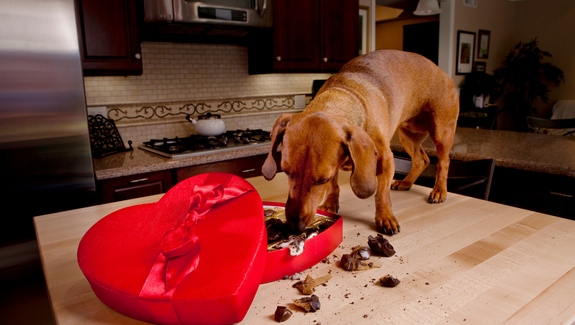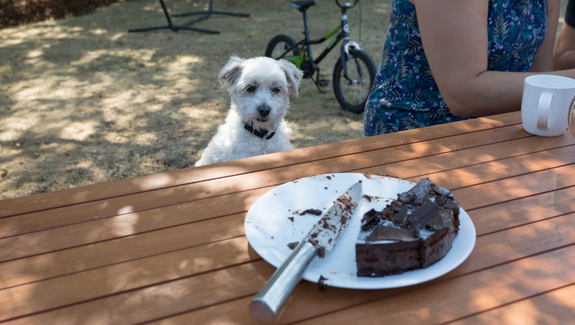
Why is Chocolate Bad for Dogs?
October 14, 2022Our furry friends don't share our joy and appreciation for the sweet taste of chocolate and other treats. It is not safe or nutritious for your pets to consume chocolate, regardless of whether it is dark, milk or white. Chocolate includes a substance that a dog's digestive system is unable to process, making it extremely toxic to canines. In humans, this chemical, known as theobromine, is metabolized quickly, but in dogs, it can induce a systemic toxic reaction and even death.
How about sugar? Is it safe for dogs? The answer is also no. Dogs are able to safely ingest the natural sweeteners that come from fruits and vegetables, but it is dangerous for them to eat processed or artificial sugars.

How Bad is Chocolate for Dogs? What if my Dog Already Consumed It?
Because chocolate is so toxic to dogs they should never be given the opportunity to consume it in any form, not even a nibble. If you suspect your dog has eaten chocolate or anything with a chocolate flavor (such as ice cream, cake, chips, cookies, etc.), seek veterinary attention immediately. Make a quick call to the nearest veterinary clinic to your home and take your dog there immediately. Urgent action is required to eliminate the chocolate's toxicity. Keep in mind that the more bitter and dark the chocolate, the more negative effects on your dog's health will have.

How Long Does it Take for Chocolate to Affect Dogs?
In most cases, the symptoms of chocolate poisoning appear between six and twelve hours after your dog has consumed it. However, the symptoms may appear later and continue for up to seventy-two hours; even so, the poisons have already begun to spread throughout your dog's body. Keep an eye out for any of these potential warning signs:
- Vomiting
- Upset stomach or diarrhea
- Tiredness
- Frequent urination
- Tremors
- Abnormally high or elevated heart rate
- Seizures
- Death
Reminder: The risk of sudden death from chocolate poisoning is higher for senior dogs and dogs with heart issues.
How To Reduce The Risk Of My Dog Eating Chocolate
-
Safely store your chocolate where your dog can’t reach it
Since you can't be present to keep an eye on your pet at all times, you should keep all chocolate-flavored treats and other meals in areas they can't reach. Chocolate should never be left out where the dog can find it, so be sure to remind your guests and family members of this.
-
Train your dog not to eat anything on the ground
Dogs can be trained to resist the urge to eat anything that falls to the ground or is left within reach on a walk, which is a common problem. As an added bonus, this is a simple order to impart. Like how you're educating your baby not to do something harmful by telling them "no" every time they try.

Due to the toxicity of chocolate for dogs, you should seek professional veterinary care rather than trying to treat the problem yourself. Because there is no treatment for chocolate poisoning in dogs, your trusted veterinarian will need to induce vomiting to flush out the poison. By keeping all chocolate out of your dog’s reach, you’ll avoid this terrible scenario from happening.
